Butter Queen Vanilla (vanilla with quality butter)
Vanilla … they say that everyone needs a good vanilla ice cream recipe, and who can argue about that? But why settle for just one recipe? This time, we are going to deviate from the normal custard-route and take a look at a special French variety – not made with cream but with the finest butter a happy French cow can offer!
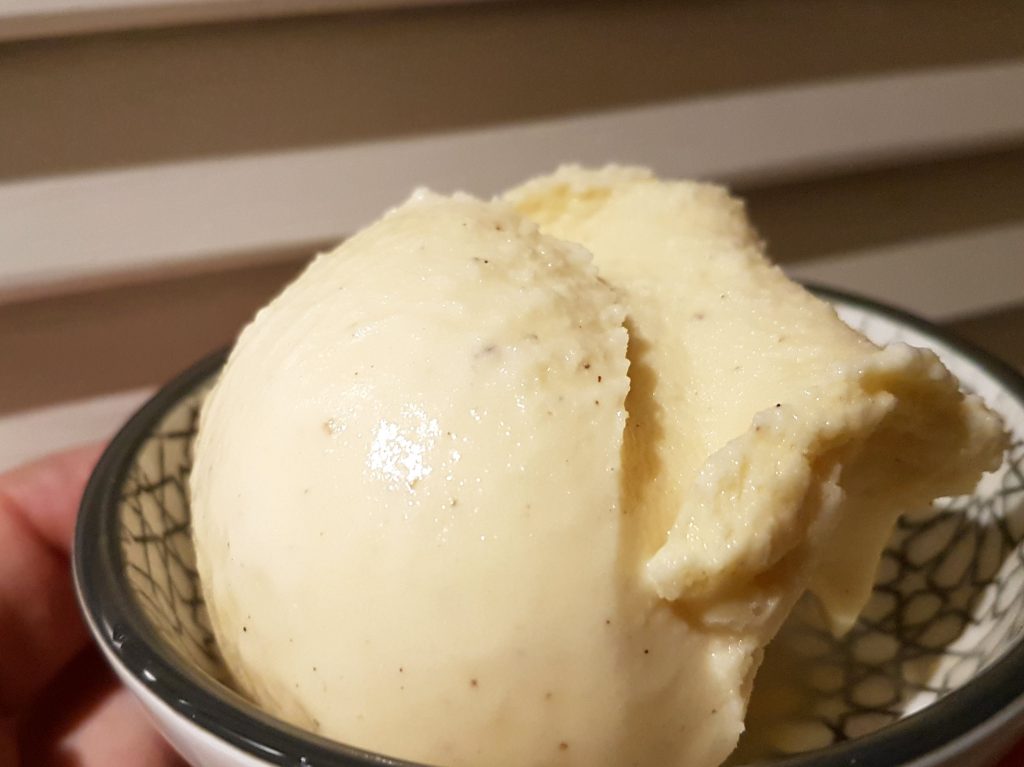
Delicious Butter Queen Vanilla ice cream … on a base of French quality butter from Echiré instead of the “usual” cream
Vanilla is a fascinating flavour, and I have written about it before. Some of you might perhaps consider the very idea of vanilla ice cream to be too common/plain/ boring for you, but then you probably haven’t had a really good vanilla ice cream yet. Real vanilla can be one of the most marvellous ice cream flavours there is!
Avid readers may already have come across a number of different vanilla recipes here on the site … but there is always time to test a new one, right?
Our new base, or Why use cream when you can use quality butter?
Some time ago, I came across an old French dessert cookbook (by a certain Jean-Claude Vignaud) in a second-hand bookstore. The recipe – where quality butter was used instead of cream – caught my interest, and I decided to give it a go!
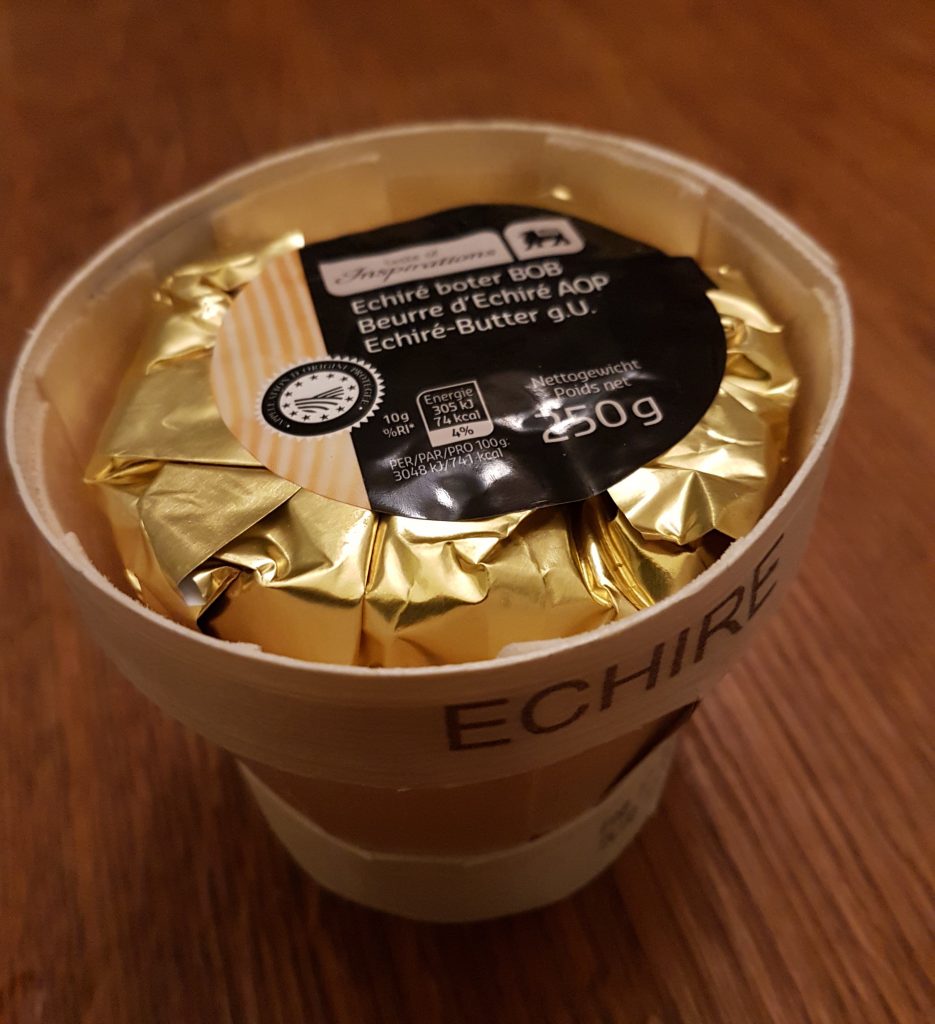
A casket of exclusive butter from the French region of Echiré, by many considered to be the “Queen of butters”
It took some efforts, but I even managed to secure a casket of the truly exclusive French butter produced in the small region of Echiré. This highly lauded “Queen of the butters” is not only hailed as great-tasting and generally fantastic, but also contains somewhat more butterfat than normal, and has a higher melting point (if you want to read more about how fabulous Echiré butter is, follow the link).
But what if you don’t have access to the best butter France can offer? Could the ice cream be made also with other good butter? I decided to test, and chose another unsalted French quality-brand (arguably not as famous as Echiré, but still …) I can report that the results were very convincing: one of my young testers exclaimed that it was the best ice cream she had had in her whole life!
In other words – go with the best butter you can find, and it will probably work out nicely anyway!
The buttery twist – How to do it!
In short, the base is essentially a custard one, but made with butter instead of cream.
Mix the dairy (only milk this time, though!) with eggs and sugar, add the vanilla and bring to a simmering heat. Continue until the base has reached a temperature of about 82-84º Celsius (180-183 ºF); the point when the base should have gotten to the so-called nappe stage, and the mix should be pasteurised.
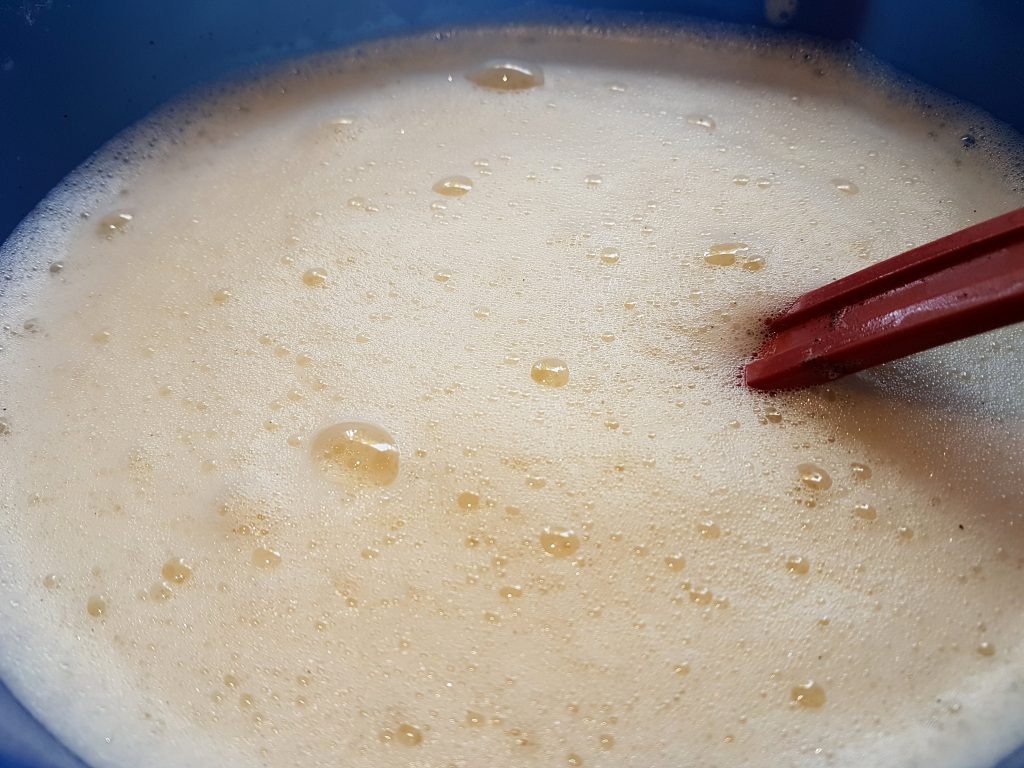
The custard base, waiting to cool down enough to be able to melt the butter without heating it too much. Kitchen voodoo or a genuine concern? Who knows …
Now, according to the recipe, the base should be given some time to cool down before the butter is added. To be honest, I do not know if this really is necessary. Butter-fanatics, however, might perhaps claim that melting the butter in more elevated temperatures would detract from its glorious flavour qualities …
Right or wrong, I impatiently let the base cool down to about 50º C (122º F) before I added the pieces of my luxurious butter and whisked until they had melted and disbursed.
In order to avoid that the butter molecules would start to lump together again in the base, the recipe ordained that the base only should be cooled down, not chilled, before churning: once the butter has been melted, churning should commence as soon as possible. Churning a less than chilled-base will usually mean that the churning will take a longer time, which typically is a bad thing when making ice cream. However, this time, we will be doing it for a good cause!
Butter queen vanilla – a refined royalty
Did you think that butter would make the ice cream taste “fatter” than usual? Or “buttery”? Well, think again! To my surprise, this very nice vanilla proved to be delicate, elegant and rather light in character. And as expressed by one of my enthusiastic young testers: “the best ice cream I have had in my whole life!”
The Butter Queen Vanilla is a treat not only for us vanilla-lovers but for anyone who likes good ice cream! Did I mention that the texture and consistency also are great, matching the delicate, exquisite character of this royal vanilla? Scoopability was also good, even after a few nights in the freezer.
So – who needs cream? Next time, go for quality butter! A truly royal ice cream experience is waiting to delight your taste buds!
- 8 egg yolks
- 300 gram sugar (about 350 ml sugar)
- 1 vanilla pod or 1-1,5 teaspoons of genuine, good quality vanilla powder
- 1000 ml (about 4⅕ cups) milk
- 150 gram quality butter (preferably from French Echiré, but any good quality butter should do)
- Start by mixing the egg yolks, the sugar, the vanilla and the milk.
- Heat and whisk until the base reaches the the so-called nappe stage (about 82-84º Celsius /180-183 º F) .
- Take off from the heat, and whisk until the base is warm but no longer hot (say, when it reaches around 50º C/122º F).
- Add the butter, piece by piece, and whisk until it has all dispersed and the base has cooled down some more.
- Remove the vanilla pod (if using), scrape out the seeds and add to the base.
- Churn immediately in your ice cream machine (or still-freeze, using your refrigerator).
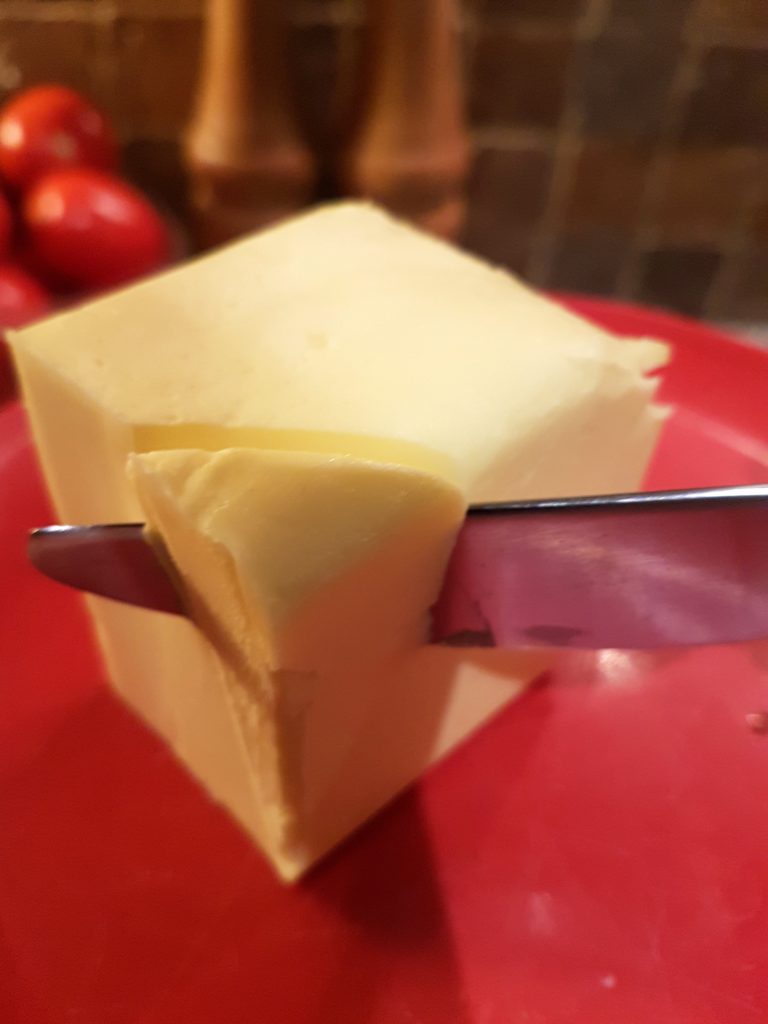
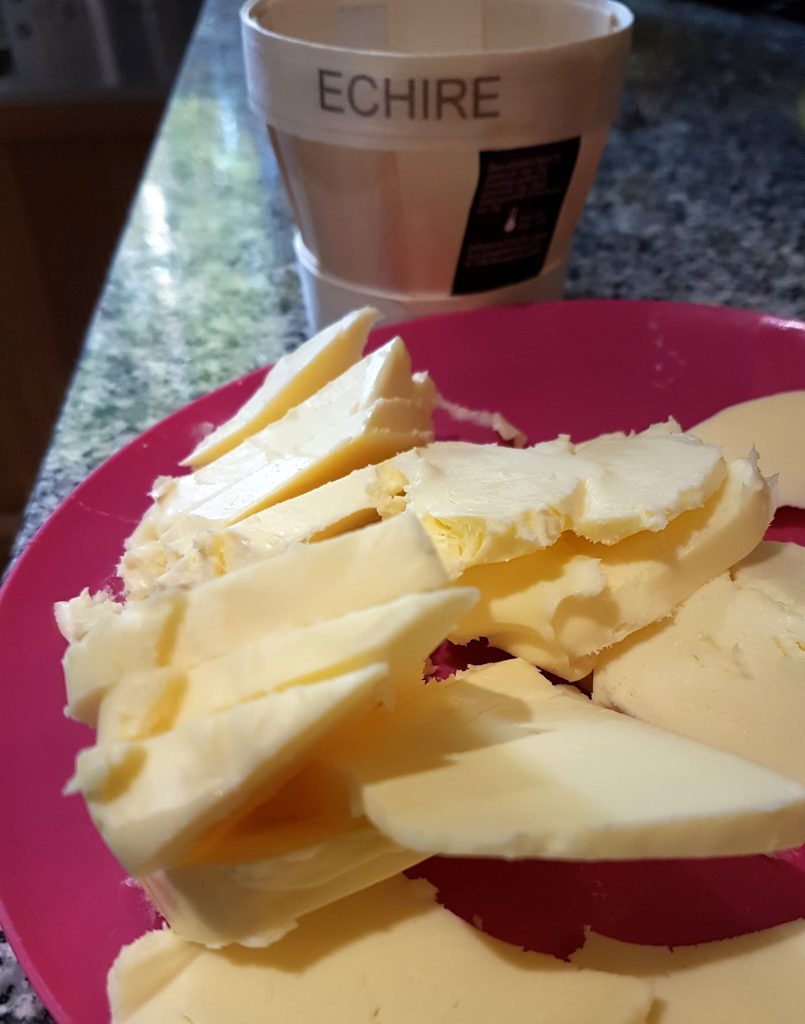
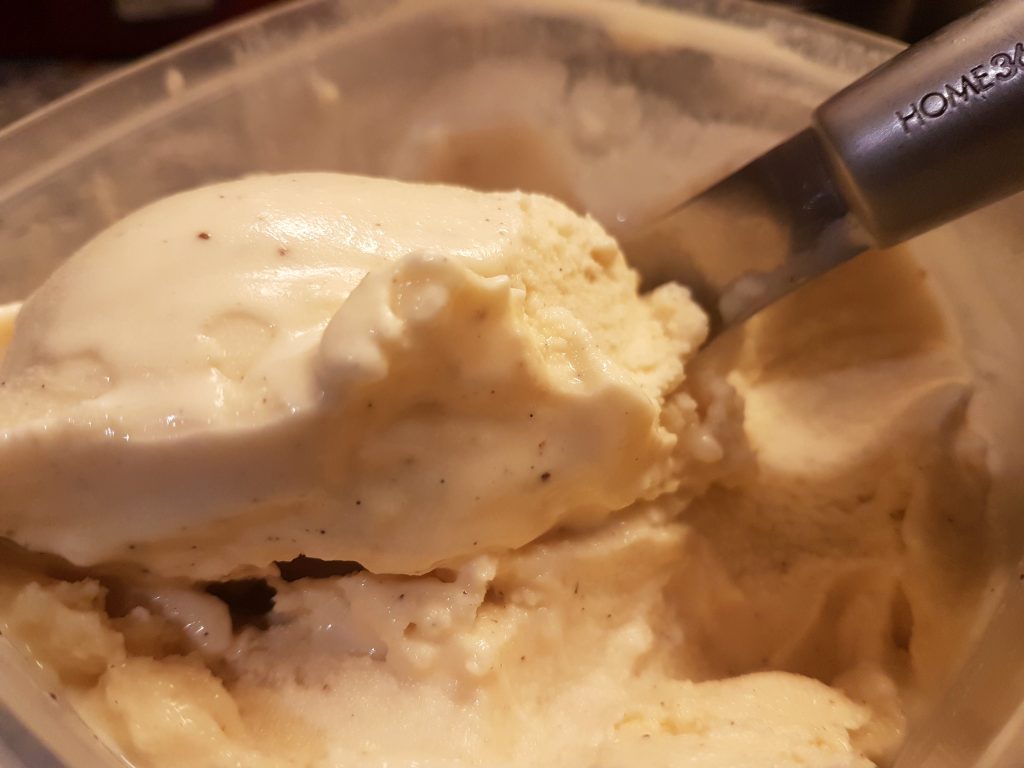
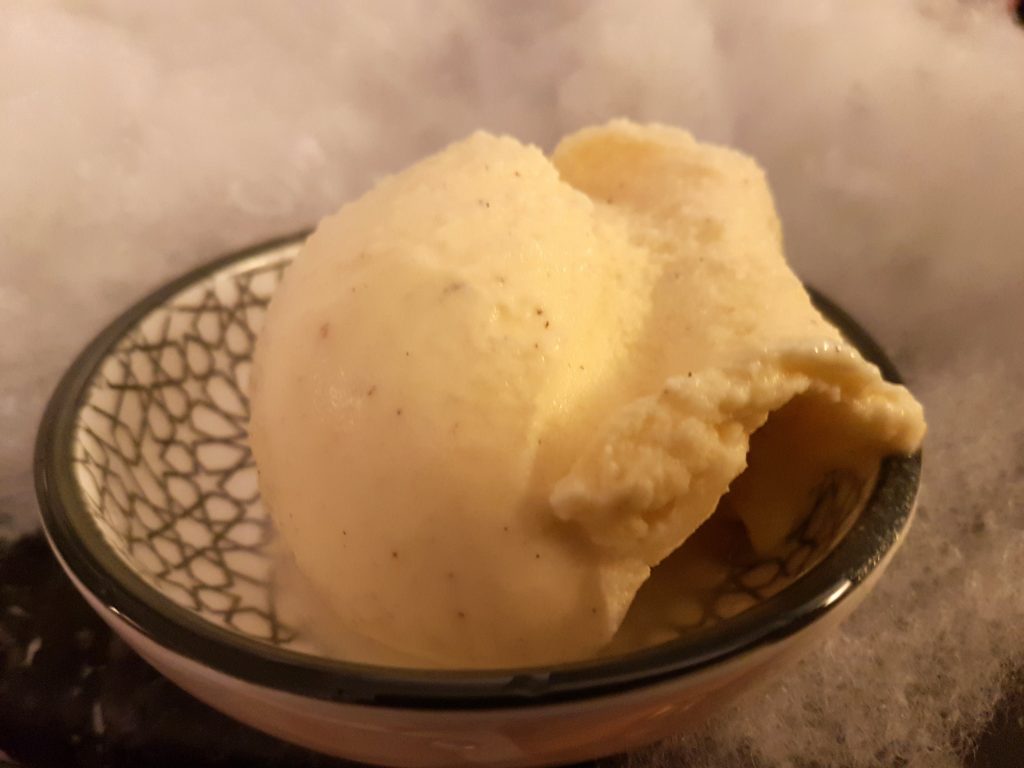
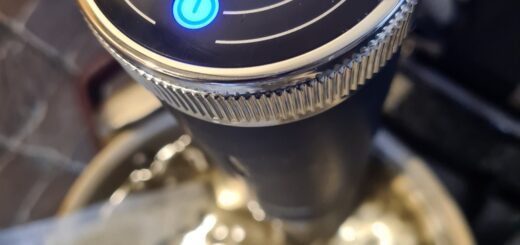
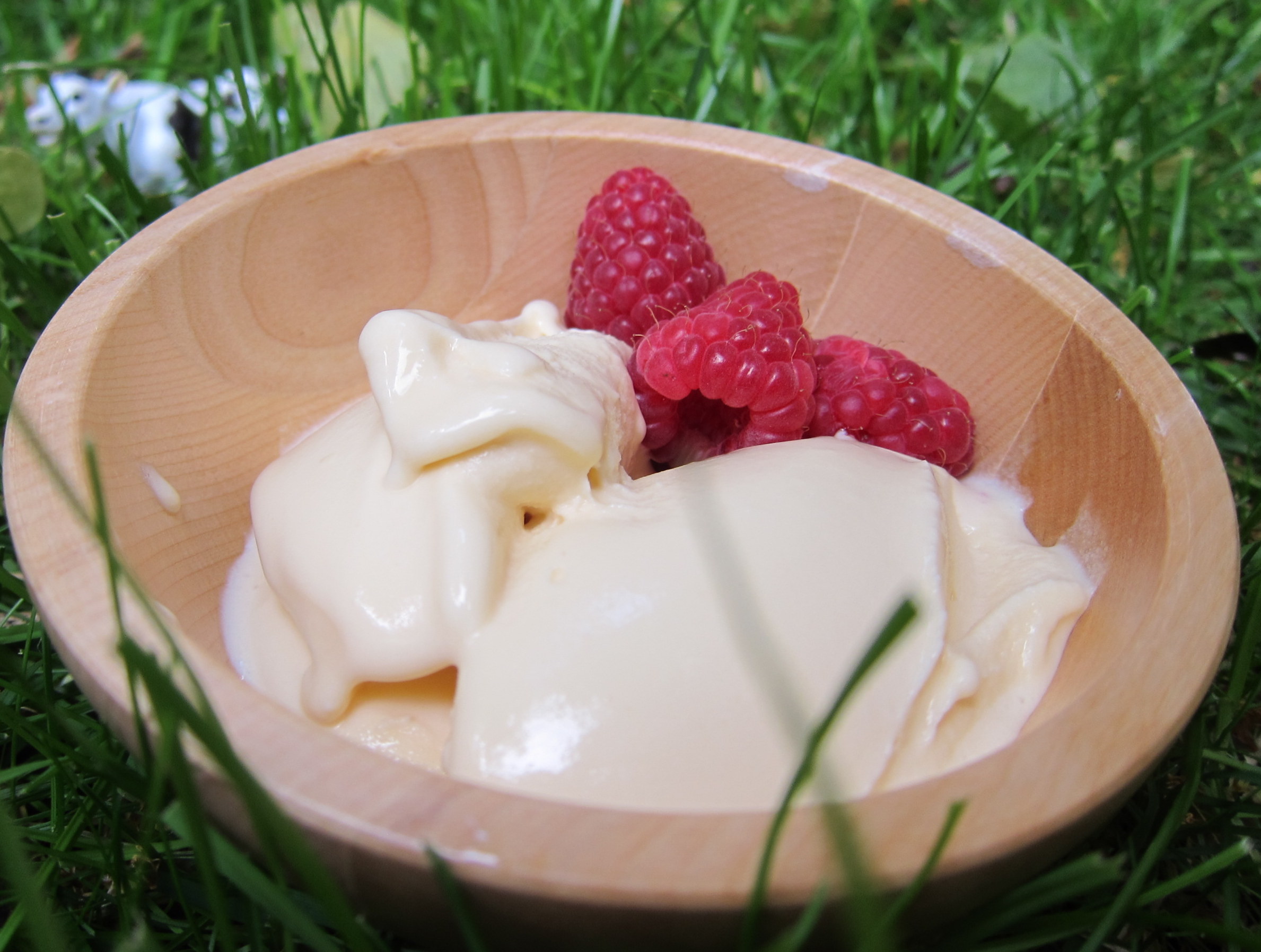
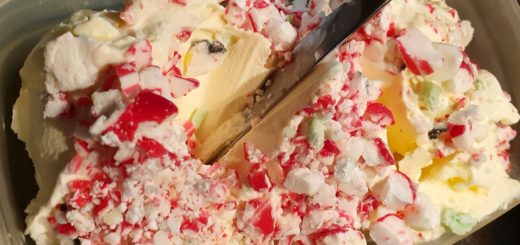


Marvelous collection of recipes. SHE said to me this morning that I should forget about bread making and start becoming expert at ice cream making. Since the suggestion came from SHE WHO MUST BE OBEYED I will start this week using the Base Recipes.
Hi John!
Thanks for the kind words, and good luck in your quest to become an expert at ice cream making (and please She Who Must be Obeyed 😉 ).
Will a pinch of salt ruin the taste of the ice cream?
I haven’t tried this recipe, but I’m very interested in it. It won’t taste similar to brown butter ice cream, will it?
Hi Ronny,
I don’t think a pinch of salt would ruin the taste. Some would probably say that such a pinch could be useful to boost the flavour of most ice creams – whether it holds true for you and vanilla, however, is ultimately something for you to decide upon 😉 .
And no – it should not taste like brown butter, as one of the points here is exactly to avoid burning/browning the butter you’ll be using.
Never use salt and rich flavor still there.
Hello Anders, I’ve just tried this recipe. The flavour is, as you say, exceptional and refined. The texture, on the other hand, is relatively coarse. Other than chilling the base down contrary to the given method before churning is there any step I could take to eliminate this?
Hello Marcus,
Happy to hear that you liked the flavour – it is indeed a special gem!
As to coarseness – and as you already seem to have thought of yourself – I would guess that the primary problem probably lies with the length of our churning (the longer it gets, the larger the ice crystals … well, you know that!). If you cannot shorten the time it takes to churn the base otherwise, pre-chilling the base (more) before the churning would be the obvious and classic solution, but with this particular recipe you would then likely face the risk of having the butter molecules starting to lump together again. I would suggest that you start by attempting to find a golden balance here, where you bring the base to a cooler state than what you tried before, but still not so cold that you run into butter lumping problems (and, if so, you could possibly try to address butter lumping by running the cool base through a frenzied blender-session before churning …).
If you are willing to test other solutions – which, I concede, may alter the character of the original recipe – you may replace some of the milk in the recipe with cream, and/or replace some of the sugar with inverted sugar (corn syrup, glucose syrup or their likes). You could also ponder adding 1-2 tablespoons of skimmed milk powder and see if that might help. Best of luck!
What would happen if you put it in an ice bath and stirred or whisked it?
Hi Katie,
If you put in the butter before the ice bath has cooled down the base too much, the butter should melt alright. However, as noted in the post, if the base then would be left in that ice bath for too long, I fear that the butter eventually would start to “lump together” again.
Anders thank you so much for your thoughtful response. The chill and blitz idea sounds promising. I’m always keen to keep ingredients to the barest minimum. Having said that your italian meringue method for sorbet is sensational. I’ve tended to add it to the mix earlier in the process than you recommend which gives a result nearer to frozen puree than frozen mousse. It’s still wonderfully scoopable after a week in the freezer.
Great to hear Marcus!
By the way – I had to make some vanilla ice cream today, and since your question brought this one back to my attention, the choice of recipe was easy 🙂 !
Sounds very similar to Sargent Ice Cream:
Scroll down on this link to see their advert. Now no longer made. It used to sell door to door in Nth Lincs following the fish van and the mobile library.
Sargents ice cream was delicious. I used to beg my parents to get via Brigg on the way to my grans in Kelsey so I could have some.
Such a shame they’ve closed their doors and their recipe has gone.
Dear Anders, so far so good! I only experienced a virtual skin whilst cooling the mixture to 50 but got away with it! Was still warm when it went into the Kmix. I can’t wait for tea time to try it
Thank you for this recipe you’ve brightened up my day
Dear Alison,
Good to hear – keeping my fingers crossed for a delightful tea time then 😉 !
Hi Anders, Thank you for your recipe.
This is how incredible your butter ice cream is,
My husband bought me an ice cream maker the next day!! Our ice cream parlour has closed down. I noticed the ingredients on last year’s empty tub included butter and then l saw your recipe. I used gold top milk and Isigny butter. If we want to make chocolate ice cream, what should we do?
Hi Alison and thanks for your kind words!
Transforming this recipe into a chocolate one should not be too difficult, as the only “alteration” necessary would be the actual addition of chocolate. You can have a look at some of the existing chocolate recipes on the blog for more inspiration, but simply chopping up a bar of good-quality chocolate (at least about 100 gram’s worth) and letting it melt into your custard would probably do the trick. Should you want to emphasise the chocolate flavour even further, you might consider to add a couple of tablespoons of unsweetened cocoa powder in the mix.
Good luck and hope both you and your husband will continue to be happy with the result 🙂 !
Hello Anders. I love this recipe and will attempt it. I have a suggestion regarding the “butter”. Butter can be held in suspension by making a “True Hot Butter Sauce”. A discovery in Nantes France many years ago. I have mastered this technique and thought, it may apply to this recipe to prevent the butter clumping back together.
A small bit of an acid base liquid like lemon juice, vinegar or wine is boiled to a reduction to concentrate the acid value. The sauce pan is removed from the heat and a small bit of butter is whisked into it. (The butter is cut into small pieces) This starts a chemical reaction that will hold the butter in suspension. The pan is returned to a very low heat and the remaining pieces of butter are slowly melted into it piece by piece waiting for each piece to melt. If the milk, sugar & egg sauce is cool enough, this butter sauce can be slowly incorporated. This sauce cannot be reheated but the object is to cool it so it wont be a problem. This may help to get the mixture cold enough to churn in a timely fashion?
Hello Roger,
Intriguing! Thanks for your interesting suggestion to use a “True Hot Butter sauce”, as well as for the helpful instructions on how to make one! I assume
that the small amount of acid base won’t carry over in the final sauce flavour?
Good.
The recipe doesn’t state whether to use salted or unsalted butter. I’m guessing unsalted…right?
Also guessing WHOLE? milk, to be specific.
Lastly, how much ice cream does this recipe make?
Hi Cheryl,
Yes, unsalted butter was used for this recipe (but honestly, I think salted butter also would work, as a little salt can work as a general taste-enhancer). And yes – whole milk indeed. I’ve updated the recipe to reflect this 🙂
The exact final yield might depend, but I’d say roughly about 1 1/2 litre (about 6 1/3 cups).